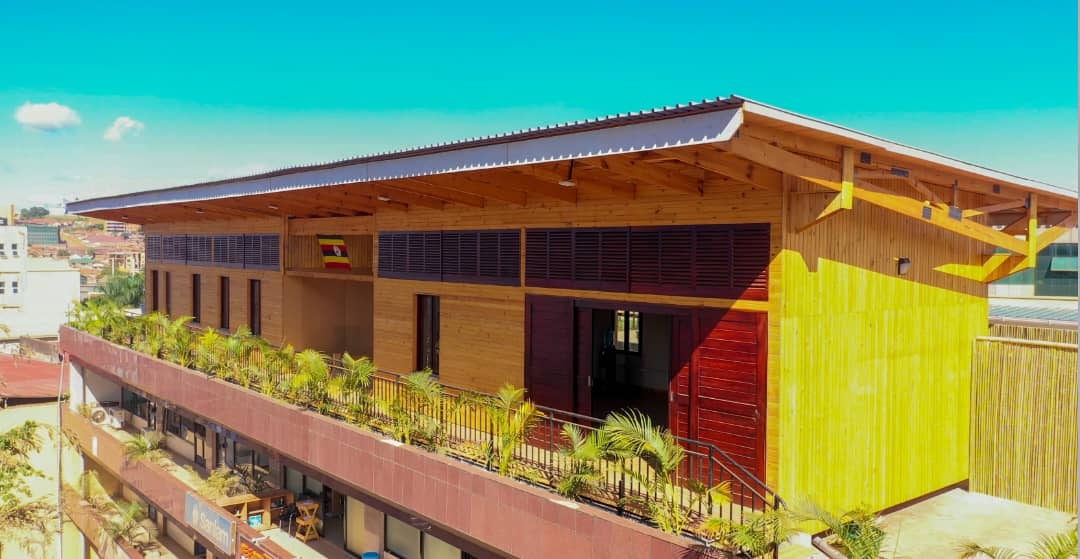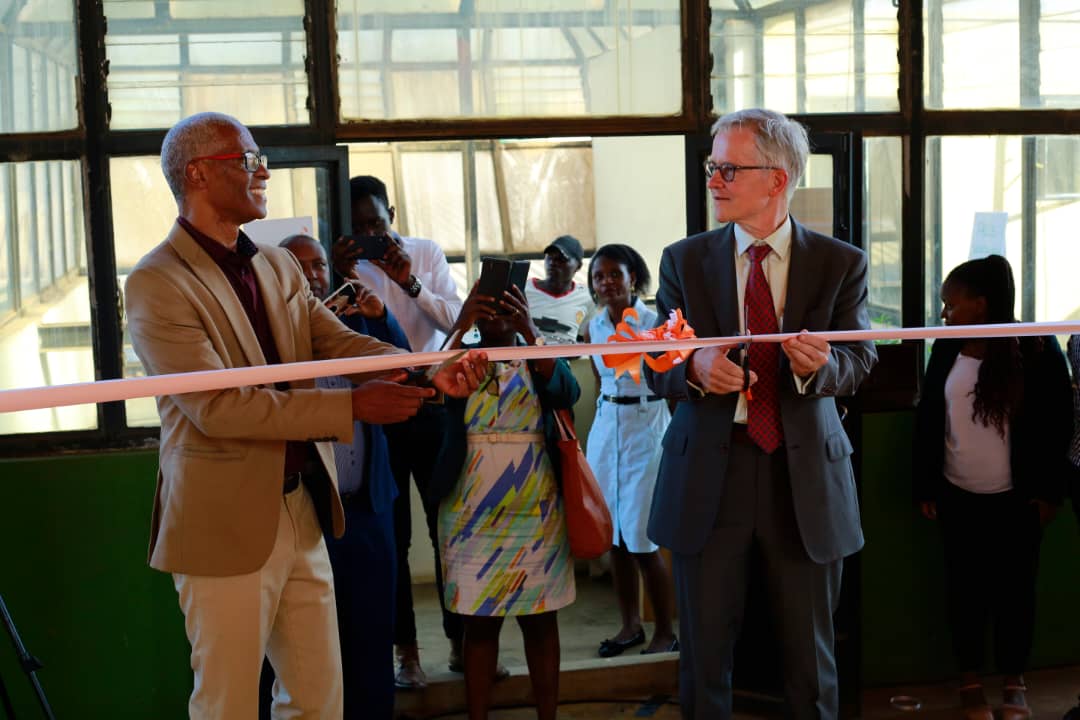
KAMPALA – Timber can be a solution to Uganda’s rapid urbanization and housing crisis according to environmentalists.
The construction industry is also said to contribute to a third of global greenhouse gas emissions, hence the need for alternative, renewable and sustainable materials like timber.
FairVenturesWorldWide (FVW), a non-profit organization dedicated to reforesting degraded areas in the tropics using modern technologies, is pioneering the construction of modern buildings using sustainable timber in Uganda.
German Ambassador to Uganda, Mr. Matthias Schauer officially open the facility.
The organization has since launched the first Glued Laminated Timber Innovation Center in the heart of the Ugandan capital Kampala which they say will promote and advance mass timber construction.
Ms. Patience Naamara, the FairVenturesWorldWide Country Director says the rate and scale of urbanization is challenging the country’s infrastructure hence massively limiting access to affordable housing.
“Timber as a byproduct of the trees should not only be seen as timber for furniture or the basic stuff we know but it can be engineered and used for bigger things,” Naamara said at a launch of the project that seeks to enhance and champion sustainable housing through the use of mass timber solutions in the region.
“If we do not change our building methods, technology, and materials, this massive challenge will roll over us. We need scalability, affordability, and quality at the same time,” she added.
She said the Glued Laminated Timber Innovation Center (TIC) stands as a remarkable exhibition hub, showcasing the immense potential of glued laminated timber while highlighting the ways in which Ugandans can add value to this sustainable resource.
The center’s beams, she said, have been constructed entirely using glued laminated timber, offering numerous advantages such as a shorter construction cycle, and environmental friendliness through carbon storage.

Baum Wolfgang, the CEO, of Fairventures Worldwide the organization has operations in Uganda because has very good conditions for growing trees and then also for utilizing trees.
“Our goal is to plant as many trees as possible. We believe that if people see that you can grow timber as a resource and then harvest it, have a benefit and income from it. Then you’re incentivized to continue to do that and then maybe also your neighbor sees that you’re doing this and takes you as an example and starts to plant trees as well,” he said.
In his presentation during the opening of a Timber Innovation Center, Simon Bosch, the project mass timber production at FairVenturesWorldWide showcased the landmark projects using timber, saying they can tackle the housing crisis given their availability in Uganda.
The experience gained from the previous projects has resulted in the further development of more complex and larger timber buildings”, he pointed out.
“Mass timber offers numerous benefits for high-rise construction”, he further added; suggesting its optimal use even in high-tech construction projects.
However, he acknowledged the challenges that the local timber value chain faced in Africa, including little awareness of their potential.
This centre aims to create more awareness of the potential for mass timber in construction, he said, adding that: “it will support the local value chains to empower local communities and support local wealth creation while limiting transportation and importing impacts.”
Uganda, he explained, can capitalise on this because of its geographical advantage.
“We are very close to the DRC, Rwanda, and close to Kenya, so with these benefits of having the resource here compared to other countries around it and having the geographical advantage, I think Uganda can really play an important role in producing engineering products and exporting to the whole region,” Mr. Bosch said.
The country has vast forestry resources which, he said, are enough to feed the region with timber.





